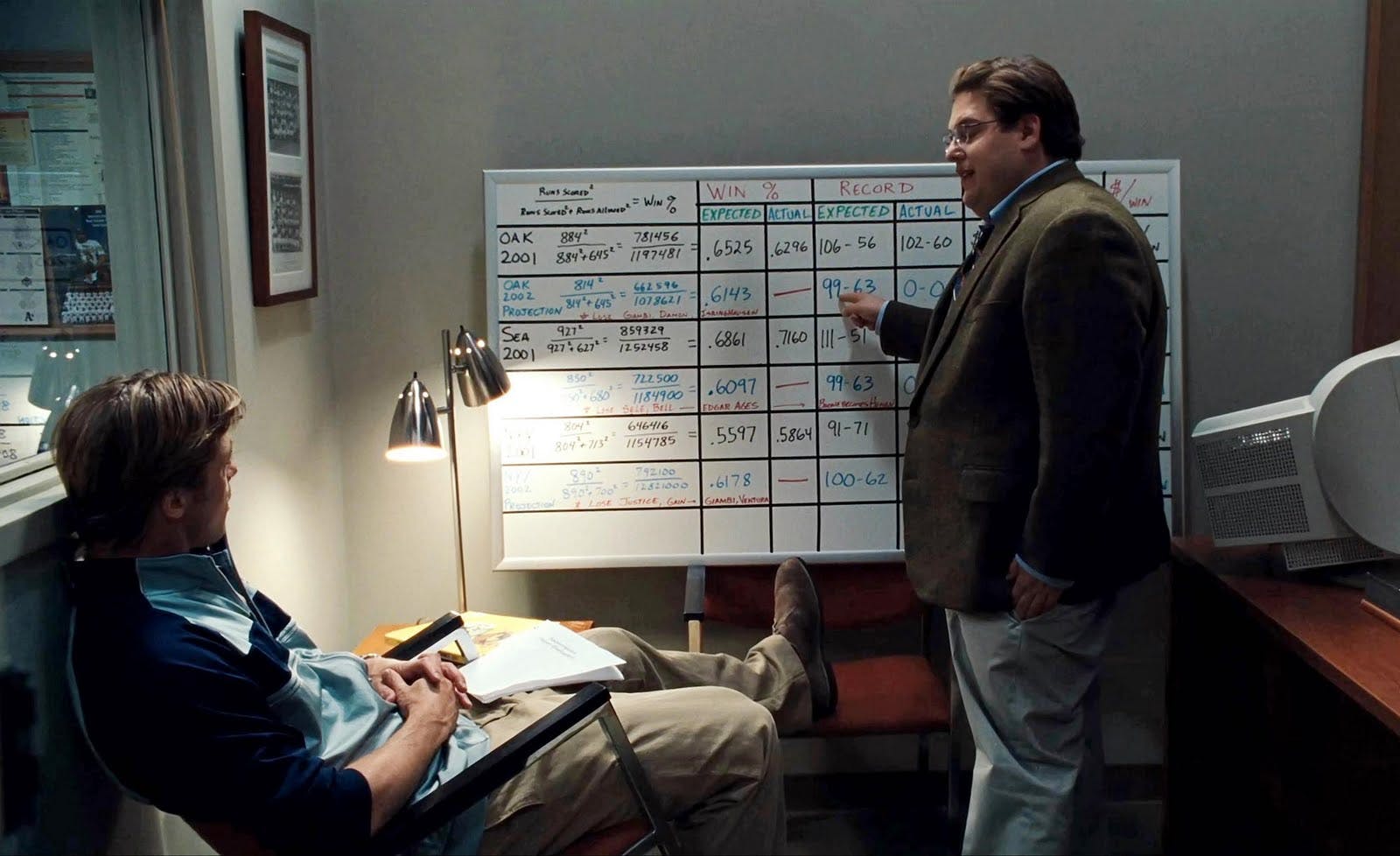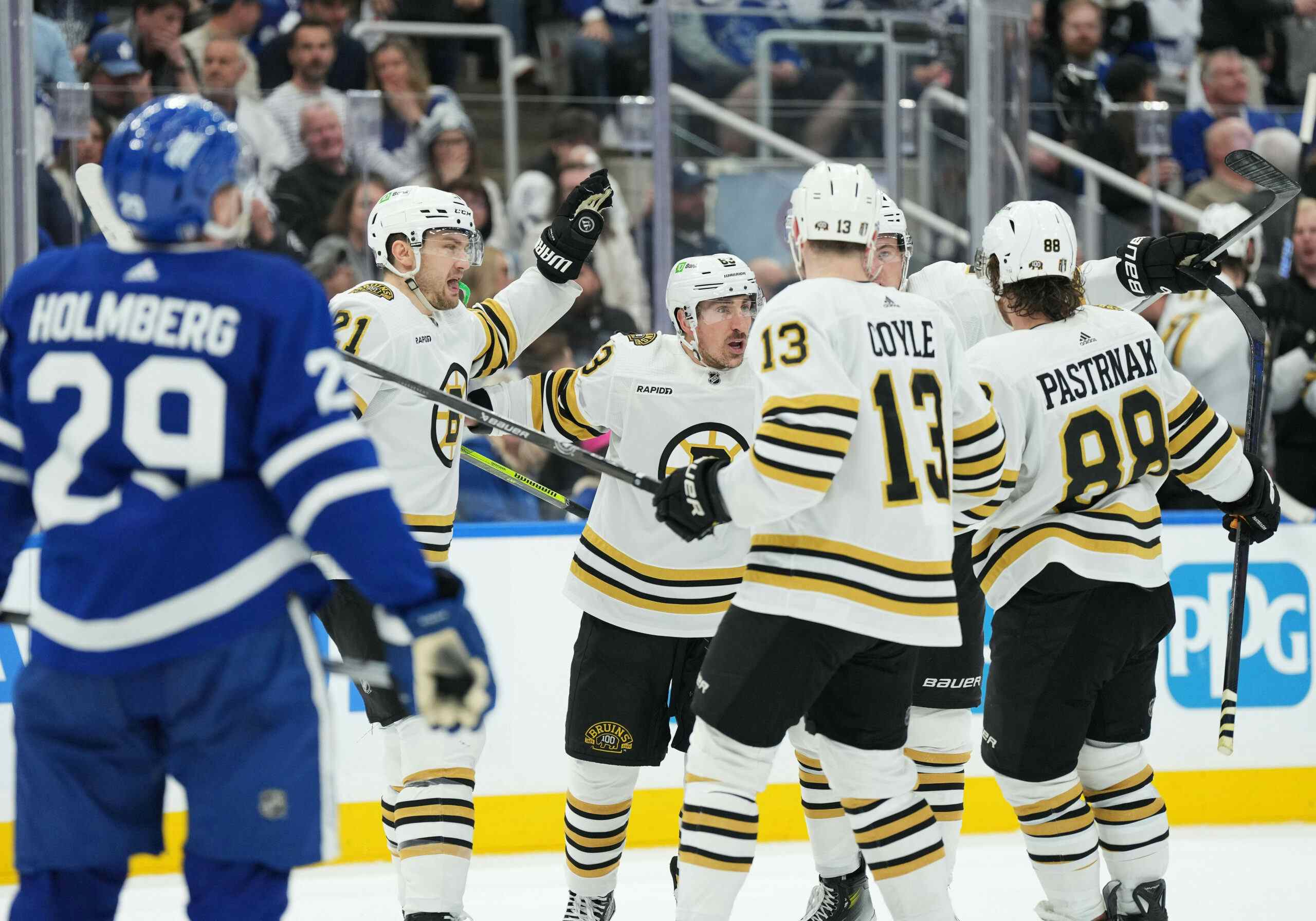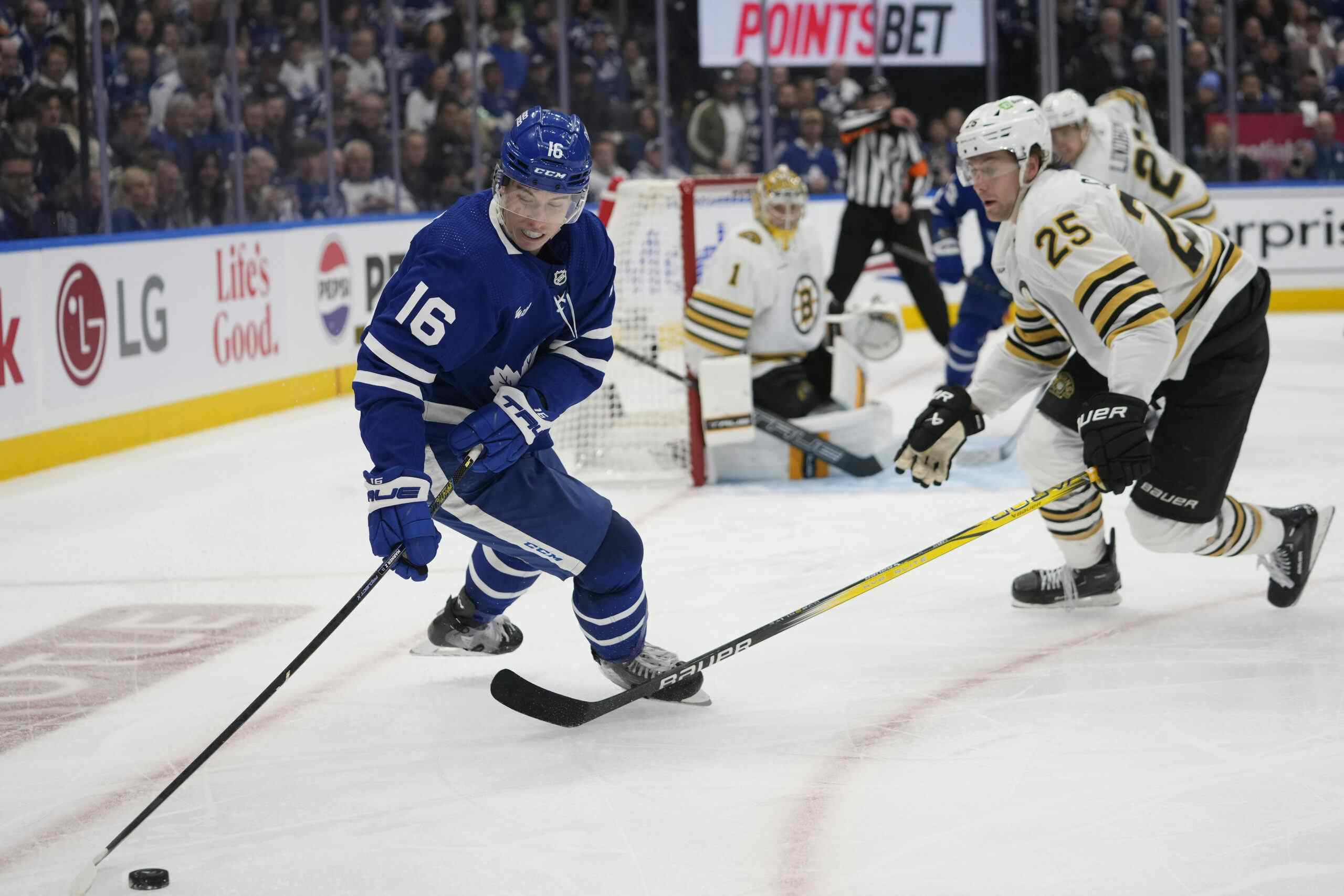Chad Bradford, Martin Marincin, and the Imperfection of the Human Mind

By Ian Tulloch
6 years ago“Your eyes and your mind are lying sons of bitches.”
That’s a quote from the Leafs current Assistant GM, Kyle Dubas, during his presentation on cognitive biases at the Sloan Sports Analytics Conference in 2015. Dubas, like myself, advocates for the use of data to objectively guide our decision-making. Humans are naturally imperfect beings, and nothing demonstrates that more than the limitations of human memory.
We’re surrounded by an absurd amount of information that we can’t possibly take in all at once, so we use mental shortcuts to help make things easier on our brain. We don’t do this because we want to, but because we have to – we’d lose our minds if we tried to memorize every single detail in the world around us. Most of the time, these mental shortcuts are helpful, since they allows us to make decisions efficiently. Every so often, though, they can lead us to conclusions that deviate from logic. To help show you what I mean, let me tell you about Chad Bradford.

This bizarre creature was actually an extremely efficient relief pitcher. Despite his awkward throwing motion, he was excellent at inducing groundballs and striking out batters without walking them. He succeeded at every level of baseball, working his way up the ranks until he was finally given a shot in the big leagues. Bradford went on to succeed in the majors after being called up, putting up an ERA of 3.23 in over 30 innings as a rookie. This is especially impressive when you consider that it was during the height of baseball’s steroid era in 1998 (just look at some of these absurd numbers).
Bradford spent the next two seasons in the minor leagues.
No, you didn’t misread that. Despite performing well against major league hitters, Bradford was sent down to Triple-A. Nobody in Major League Baseball wanted to take a chance on Bradford because he didn’t fit their preconceived notion of what a pitcher should look like. He put up excellent results, but he looked awkward doing it. Twenty-nine teams decided they’d rather value players who put up worse results in a way that was more appealing to the eye. One team was willing to rely on evidence-based decision-making.
Failed to load video.
By now, you’ve probably heard the story of Moneyball. It’s one of my favourite films. It’s also an excellent example of how biases can impact our decision-making. Chad Bradford was wildly undervalued because he succeeded in unconventional fashion. No one could argue with the objective truth – he consistently got batters out – but he didn’t do it in an aesthetically pleasing manner. Because his success was unorthodox, coaches didn’t trust him, management didn’t value him, and other teams overlooked him. He was essentially outcasted by Major League Baseball until one organization was willing to look past the aesthetics and focus solely on his results.

This leads me to Martin Marincin. Everything about Marincin on the ice is unorthodox. He has a 50-foot stick; he looks awkward when he skates; his arms are so long and lanky he looks like a Wacky Waving Inflatable Arm Flailing Tube Man; he doesn’t seem to know how to handle a hockey puck – even when he scores it looks like an accident:
So why on earth would I bring up this disaster on skates after talking about the great Chad Bradford? Well believe it or not, Martin Marincin has actually been very effective at driving play throughout his career. He fails our “eye test”, in that he doesn’t resemble what most pundits would consider a modern NHL defenceman, yet somehow he drives results. How is this possible?
Breaking Down The Results
To tackle this conundrum, let’s first dive into Marincin’s on-ice results. You want players who can consistently outshoot (CF%) and outscore (GF%) the opposition. Tyler Dellow went back and looked at Defencemen since 2013 whose teams have outshot and outscored the opposition significantly more when they’re on the ice relative to when they’re off of the ice (for you stats nerds, the parameters were a Corsi Relative and Goals For Relative of at least +2.0% each). Here’s a list of the 22 Defencemen who fit this criteria:
As Dellow puts it, there seems to be a simple explanation for the players in this group: star players who drive results (ie. Doughty, Subban); partners who ride their coattails (ie. McNabb to Doughty, Markov to Subban); defencemen who succeed in very sheltered minutes (ie. Brandon Davidson); and…Martin Marincin?
Although there tends to be an argument that Marincin would fall into the “sheltered” category, over the past 4 years it’s objectively untrue. From 2013-2017, he’s in the 50th percentile when it comes to Quality of Competition, meaning that he’s faced league average competition. He’s actually played tougher minutes than big names like Aaron Ekblad and Colton Parayko. Most of us consider these players excellent young defencemen because of their ability to drive results while facing decent competition, but we don’t make the same assessment of Marincin.
There’s clearly a divide between perception and reality here. Marincin consistently drives shot and goal differentials, does it against pretty solid competition, but is often considered a fringe NHLer because he fails the infamous eye test. To borrow a quote from Toronto’s current Assistant GM, “our eyes and our mind are lying sons of bitches”, so what are they missing when it comes to the curious case of Martin Marincin?
Breaking Down The Footage
Before we dive into why Marincin drives results, let’s call a spade a spade – he’s terrible with the puck. If you #WatchTheGame, you’ll know that Marincin struggles with breakouts, often treating the puck like a hand-grenade.
He also has a bad habit of putting the puck off of the glass – essentially conceding possession to the other team – instead of passing the puck to his uncovered partner.

These clips help show why Marincin’s zone exit numbers are so poor. He rarely gets the puck out of his end with possession, often whipping it blindly off of the glass instead of looking for an outlet. He’s one of the few defencemen in hockey with horrible zone exit numbers, but excellent shot & goal differentials. The other name that comes to mind is Niklas Hjalmarsson.
These defencemen can’t seem to make a breakout pass (exiting the zone with control under 30% of the time last season), yet they’re able to consistently drive results. Again, you’re probably wondering “how is this possible?” We know Marincin struggles with his skating, puck-handling, and all-around ability to look like an NHL defenceman. So what exactly is he good at? One area of his game that stands out to me is his ability to deny zone entries:
Although I recommend reading this fantastic article in its entirety, the graph does a pretty good job of telling the story: Martin Marincin was the Leafs’ best defenceman in the playoffs at denying zone entries, and frankly it wasn’t even close. None of Toronto’s defencemen were able to keep Washington’s forwards below a 50% carry-in rate, except Marincin, who was able to limit them to controlled zone entries on only 43% of their attempts. That kept him in some pretty good company among blue liners this postseason:

The first time we saw Martin Marincin’s name next to a bunch of great players, it baffled us. Hopefully this time it makes a little more sense, considering it takes his biggest strength into account – his ability to take away space at the blue line. Here’s how he does it:

Using his comically long stick, Marincin is able to step up on opposing forwards and cut them off before they enter the zone. Although he’s not the greatest skater, he’s able to control his gaps and force players to the outside. When they hit the blue-line, he steps up on them and forces them to make a decision: either dump the puck in, or lose it.

It’s something that often goes unnoticed, but his ability to step up on players in the neutral zone is part of what makes him such an effective player. His team consistently gives up fewer shots (and goals) when he’s on the ice, and it’s because of plays like these:
His ability to deny zone entries is especially handy on the penalty kill, where it’s been statistically proven that controlled zone entries are currently the best predictor of power play success. Based on this information, denying zone entries is logically the best way to shut down opposing power plays. It’s no wonder Babcock’s admitted that Marincin might be Toronto’s best penalty killer, considering he can make plays like these at the blue line:
Another area of strength I’ve noticed in his game is his ability to make smart reads and aggressively pinch in the offensive zone. The Leafs ran a very aggressive forecheck last season, relying heavily on pressure from defencemen to force turnovers whenever pucks were whipped around the boards. After diving into the video, I found that Marincin was one of the Leafs’ most effective defenders at pinching below the hashmarks to take away space from opposing forwards. Here’s a great example of what I’m talking about.
Watching the games, it’s something that’s easily missed, but it’s an important aspect of driving results for defencemen. Even when he’s not first to the puck, Marincin does a great job of taking away space when he pinches.

As you can see in this clip, Marincin’s presence prevents the winger from making a breakout pass. It’s little plays like this that go unnoticed, but over the course of a game will add up and drive shot differential. Here’s another great example of his aggressiveness in the offensive zone:
Possession is nine tenths of the law. If you can keep your team on offence, it’s a lot harder for the other team to generate chances. As I like to say: puck possession is shot suppression. By aggressively pinching in the offensive zone, Marincin is able to take away space and make life difficult for the opposition.
That’s my rough breakdown of why Marincin is able to drive results so well. Let’s take a deeper dive into why this isn’t the public perception.
Confirmation Bias
Throughout the course of a hockey game, there are hundreds of little plays that contribute to a team’s success: board battles, zone denials, chip passes, you name it. Late on a Tuesday night, though, our brains don’t have the energy (or desire) to absorb all of that information. We’ll only remember the most significant plays (the goals, big hits, timely saves, costly errors), especially when they’re consistent with our preconceived notion of a player. When something happens that contradicts our beliefs, though, we tend to dismiss it.
For example, if we think highly of Player X, we’ll remember his flaws less often. For Leafs fans, Morgan Rielly is an excellent example of this. His defensive game leaves much to be desired, but because he’s regarded in such a positive light, we don’t remember his mistakes very often. When it comes to a player like Martin Marincin, though, who most fans will agree is a poor hockey player, his mistakes stand out in our mind because they’re consistent with our opinion of him. This is a textbook example of confirmation bias – we remember information that confirms our own beliefs, often neglecting evidence to the contrary.
The Big Mistake
The best example of confirmation bias skewing our perception of a player is “The Big Mistake”. This is the name of my favourite Tyler Dellow piece, which is unfortunately no longer publicly available. In the article, he discusses how fans will fixate on ‘the big mistake’ that a player makes, ignoring all of the other plays they made throughout the course of the game. Combine the big mistake with confirmation bias, and you have a very powerful effect.
Failed to load video.
This was certainly not the best play Marincin could have made, but it’s one that every defenceman makes. You’ll see this exact play happen multiple times a game and no one will bat an eye – but because the play resulted in a goal, it becomes significant in our mind. Throw in the fact that it was Marincin who made the play, and you have the perfect scapegoat.
Objectively speaking, it’s a shot from the boards that an NHL goalie needs to save, but blaming Frederik Andersen wouldn’t be consistent with our beliefs. He played a great game, had a fantastic season, and led the Leafs to the playoffs. Rather than blaming him for the loss, fans turned to their preferred target, Martin Marincin.
Thinking about it rationally, it’s obviously unfair to specifically blame one player for an entire loss. A hockey game is made up of thousands of smaller plays that help tilt the odds in a team’s favour (but often comes down to luck anyways). Unfortunately, the human brain doesn’t remember all of these events. It seeks out the most significant information that’s consistent with our beliefs, and neglects the other 99%.
The Nature of the Position
Evaluating defencemen has become one of the trickier aspects of hockey analysis these days. Unlike forwards, they’re not put in a position where their success is highly recognizable. We notice when a forward does something great (goals, assists, scoring chances) and often forget their mistakes (OZ turnovers) since they don’t directly result in a goal against. With defencemen, it’s the opposite. Their positive aspects of play often go unnoticed, while the negatives stand out in our mind. Very few hockey fans are going to remember the time a defender effectively closed the gap in the neutral zone, but we’ll all remember when they turned the puck over right before a goal.
Part of the reason data is so important is that it can help us objectively cut through these biases. If a player is consistently making costly errors that hurt his team, it’s going to show up in his results (his team will allow more shots and goals when he’s on the ice). If a player is consistently driving results over a large sample, though, it means that he’s doing something to help compensate for the mistakes that he’s making.
Final Thoughts
Let’s bring this back to a controversial Maple Leafs defenceman who doesn’t pass most fans’ typical “eye test”. This player consistently drives results, but is often criticized by the media and fan base. Even though he has a tendency to turn the puck over and make “the big mistake”, his team still scores more goals when he’s on the ice compared to when he’s off of the ice. He has a reputation for being sheltered, but he’s objectively faced competition similar to stars like Aaron Ekblad and Colton Parayko over the past four seasons.
That player’s name: Jake Gardiner.
See what I did there? I could have easily said the name Martin Marincin, but I thought I’d take this chance to remind everyone that it wasn’t too long ago when Jake Gardiner was widely considered a poor defenceman. While there’s still a contingent of the fan base and media that fail to recognize his strengths, I think it’s fair to say that most have come around on Gardiner. It helps that fans got to see him play top pairing minutes towards the end of the season, where he excelled against elite competition:

I’m not going to lie, I used to be on the other side of the Jake Gardiner argument. I ignored fancy stats like “Corsi” for the longest time because they contradicted what my eyes told me. When I watched Gardiner play, I saw a player who was too risky and made costly turnovers that resulted in goals against. My eye test told me that he was an ineffective NHL defenceman.
So what changed? Gardiner’s play didn’t change; he kept putting up excellent results year after year. It was my eye test that needed to change. Players like Gardiner forced me to re-approach the way I looked at hockey. Instead of focusing on a game’s major events (goals), I started looking for minor plays. Little things like breakout passes, neutral zone gap control, O-Zone pinches – I noticed that all of it helped teams maintain possession of the puck. The more I researched, the more I found that players who consistently did these things were the players that best drove results over large samples.
With Martin Marincin, maybe he doesn’t need to change the way he plays the game. Maybe we need to change the way we watch the game. His subtle defensive plays that help drive results remind me of the way a defensive midfielder in soccer will help his team regain and maintain possession throughout the course of a game. It often goes unnoticed, but if you begin watching closely, you’ll be able to understand why these small plays make such a big difference. Here’s a great quote about one of the greatest defensive midfielders in recent memory that I think holds true in this sense.
You watch the game, you don’t see Busquets. You watch Busquets, you see the whole game.– Vicente Del Bosque
Martin Marincin will never have the impact on a game that Sergio Busquets did at the height of his career in Barcelona, but the two are extremely similar in the way they subtly yet effectively drive possession. Marincin’s not a living legend like Busquets. He might not even be a top four defenceman. So what exactly is Martin Marincin? He’s a victim of several biases holding back the human mind.
Much like Chad Bradford’s awkward throwing motion, Marincin’s play may not be pretty, but it’s effective. Given that he’s consistently outshot and outscored opponents over such a long period of time, it’s probably in our best interests to move past his unpleasant aesthetics and focus on his performance. If someone’s objective results are consistently defying our subjective evaluations, we probably need to start questioning the validity of our eye test.
Your eyes and your mind are lying sons of bitches, and few demonstrate that better than Martin Marincin.
Recent articles from Ian Tulloch





